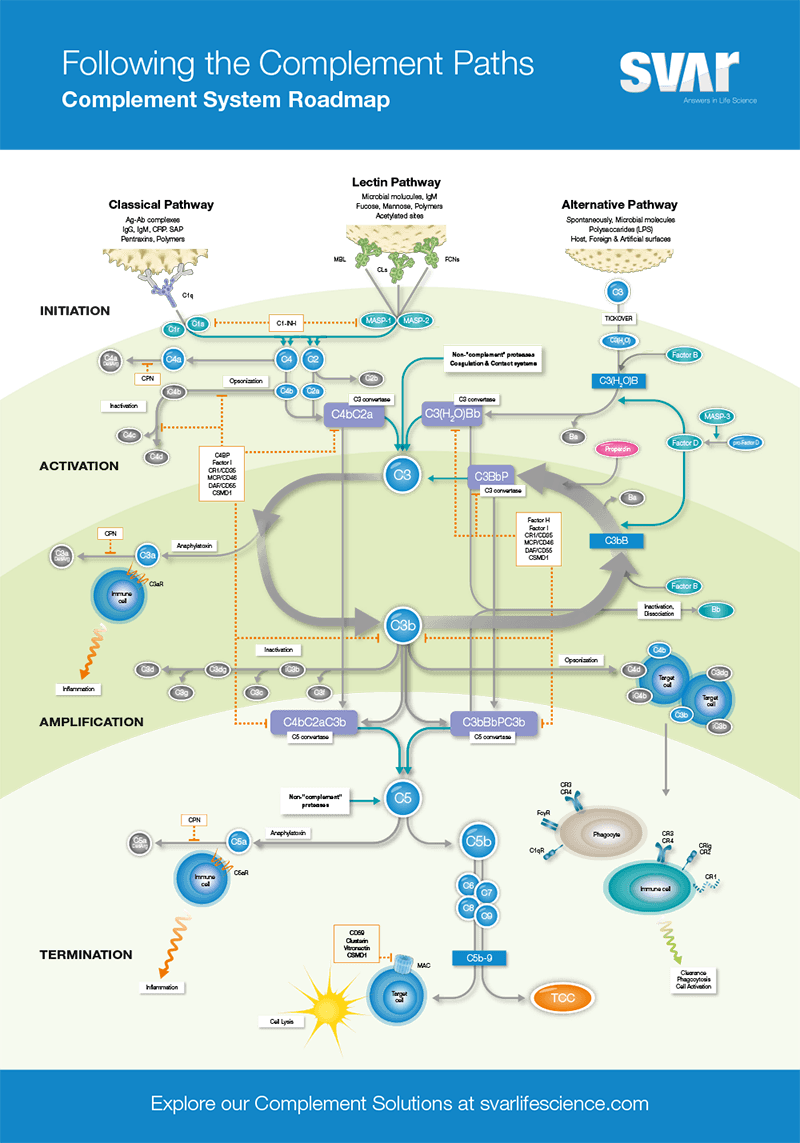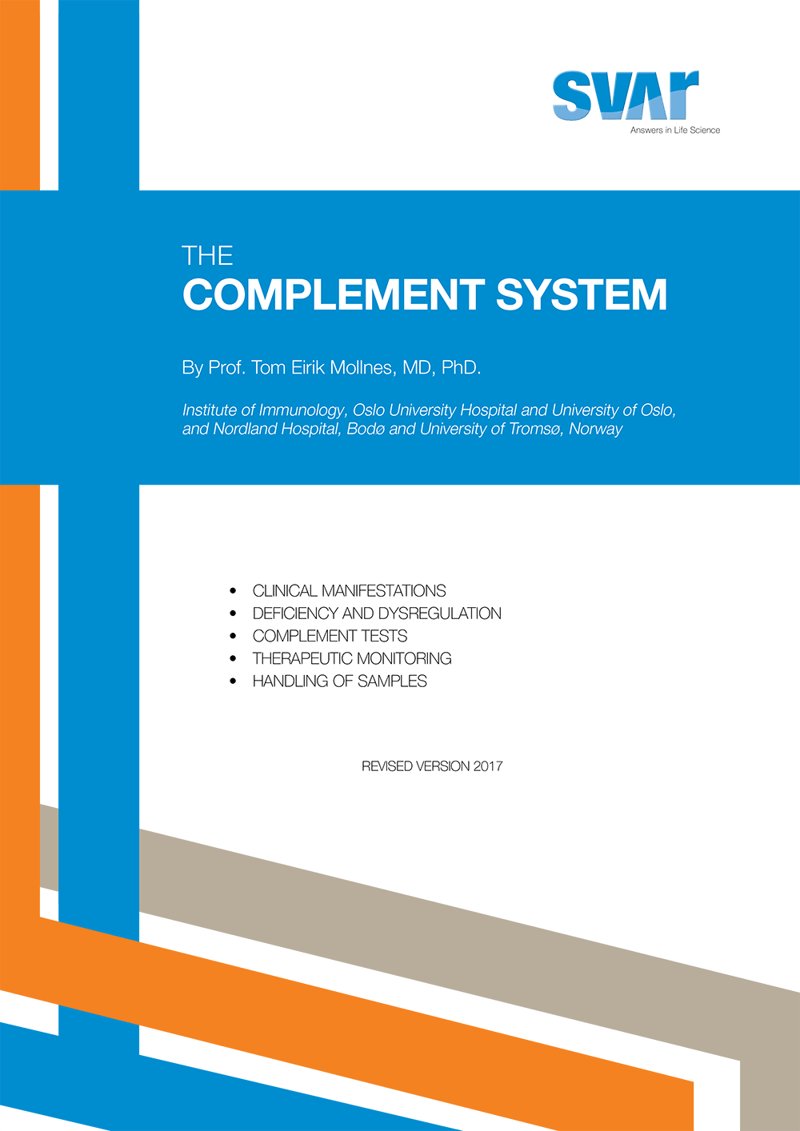- Other Products
- CCP
We offer functional and biomarker assays that can be used to explore every angle of complement system-involvement in a wide range of application areas.
Based on the well-established and robust ELISA technology, our products can be used in standard setups as well as automated setups with ELISA robots. Ready-to-use reagents contribute to the ease-of-use of the assays.
Svar’s complement activity biomarker assays offer excellent specificity, which means that you get easy-to-interpret data without having to worry about false positives. In addition, our assays offer low batch-to-batch variation compared to hemolytic methods – where erythrocytes can differ between lots – which means more consistent and robust results.
Taken together, you can get reliable and objective results in as little as 2-4.5 hours – drastically reducing time spent compared to hemolytic assays.


The complement system is an integral part of the innate immune response. Given its important role in many human disorders, complement activation studies are important in a wide range of applications – from drug development and medical device safety to clinical diagnostics and basic research.
Svar has over 15 years’ experience of complement system assay development. Our complement system assays have been developed by our experienced scientists in close collaboration with key opinion leaders, to yield sensitive, reliable and easy-to-use products for the exploration of most aspects of the complement system.
Our complement portfolio is divided into the following categories:
Ideal for detection of complement activation or dysregulation in the complement system.
Perform analyses of all three pathways to get the full picture of the complement system or zoom in on the amplification loop with our Factor P functional assay.
iLite® cell-based functional reporter-gene assay in an assay-ready format. Enables a fast, streamlined work process with low variability.